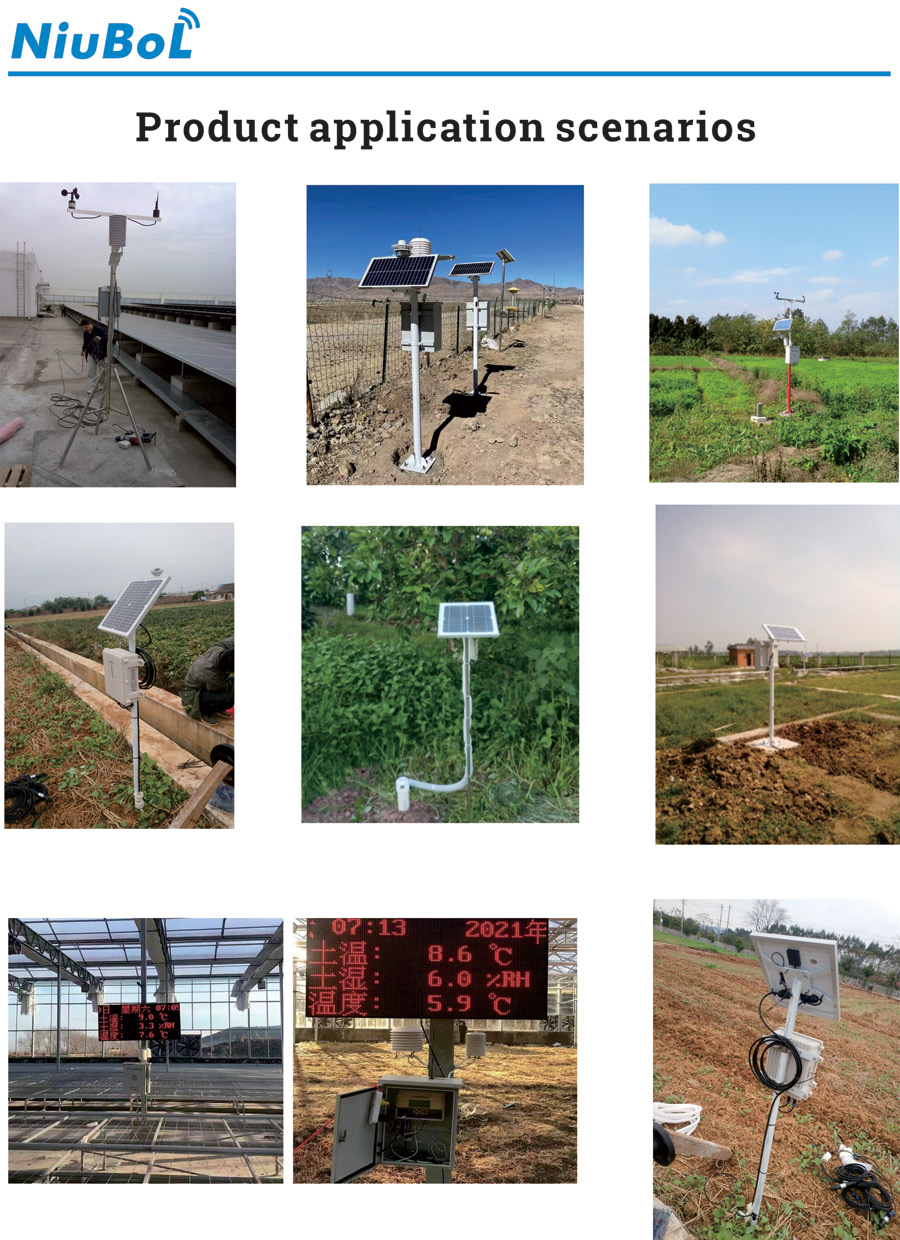

— Blogs —
—Products—
 Consumer hotline +8618073152920
Consumer hotline +8618073152920 WhatsApp:+8615367865107
Address:Room 102, District D, Houhu Industrial Park, Yuelu District, Changsha City, Hunan Province, China
Product knowledge
Time:2024-01-17 19:23:16 Popularity:1243
Agricultural weather stations are facilities dedicated to monitoring, recording and analysing agrometeorological elements. They are usually located in farmland or rural areas and aim to provide meteorological information and forecasting services required for agricultural production.
The main task of agricultural weather stations is to collect and record meteorological data, including temperature, rainfall, humidity, wind speed and sunshine. These data are very important to farmers and agricultural practitioners as they can help them understand the impact of weather changes on crop growth and development, as well as to take appropriate agricultural management measures.
Apart from data collection, agricultural weather stations are also responsible for producing weather forecasts to help farmers and agricultural decision makers make sound agricultural production plans. By analysing meteorological data and using meteorological models, agrometeorological stations can provide forecasts on weather trends and changes in the coming days or weeks to help farmers choose appropriate sowing times, irrigation schemes and pesticide use, etc.
Agro-weather stations improve the efficiency of agricultural production:
1. Real-time monitoring of meteorological and environmental data: Agricultural weather station sensors can monitor real-time temperature, humidity, light, wind speed, wind direction, rainfall, barometric pressure and other meteorological elements, as well as soil temperature and humidity and other environmental data. These data can help growers understand the impact of current environmental conditions on crop growth, so as to make timely and effective countermeasures.
2. Preventing and mitigating natural disasters: through real-time monitoring of meteorological data, the agrometeorological station sensors are able to detect meteorological problems in a timely manner and prevent possible future natural disasters in advance, such as torrential rains, gusty winds and hailstorms. This helps to reduce crop losses from natural disasters and improve the stability of agricultural production.

3. Precise decision-making and resource utilisation: with the data provided by the agrometeorological station sensors, growers can make planting plans, fertiliser strategies, irrigation arrangements, etc. more precisely. This helps reduce resource wastage and improve agricultural production efficiency, while also benefiting environmental protection.
4. Improve yield and quality: Through accurate monitoring and management, the agro-weather station sensor can help growers better understand crop growth patterns, optimise the planting environment, and improve crop yield and quality.
5. Improve market competitiveness: high-quality agricultural products can improve market competitiveness and bring better economic benefits for growers.
Agriculture weather stations can also provide other services, such as agro-meteorological counselling, training and technical support. They co-operate with agricultural departments, research institutes and agro-technology enterprises, etc., to promote the development and application of agrometeorological technologies in order to improve the effectiveness and sustainability of agricultural production.
Major countries using agricultural weather stations
Agricultural weather stations are one of the commonly used meteorological facilities in countries around the world, and there may be differences in the application and management of agricultural weather stations in different countries. The following are some of the countries that mainly use agrometeorological stations:
1. China: The construction and application of agrometeorological stations in China have been relatively mature, with various types of agrometeorological stations spreading all over the country, providing important meteorological support for agricultural production.
2. the United States: the United States has the most advanced meteorological observation facilities and technologies in the world, and its system of agricultural weather stations covers the whole country, providing farmers with accurate meteorological information and services.
3. Japan: Japan has a very good network of agrometeorological stations that can monitor and analyse meteorological changes in real time and provide a wide range of meteorological data and forecasts.
4. India: India also has a relatively well-developed network of agrometeorological stations, whose meteorological data and forecasts can help farmers make scientific decisions on planting, irrigation and fertiliser application.
Some other countries that mainly use agrometeorological stations include Brazil, Australia, Canada, France, etc. Different countries have their own characteristics and advantages in meteorological observation, data processing and service management.

In conclusion, agricultural weather stations play an important role in agricultural production by collecting, recording and analysing meteorological data, providing meteorological forecasts and agricultural advisory services, providing reliable meteorological information to farmers and agricultural decision makers, helping them to make scientific decisions on agricultural production, assisting farmers in improving crop yields and quality, reducing production risks, and facilitating sustainable agricultural development.
Agriculture-Sensors-Weather-Stations-Catalog-NiuBoL-New.pdf
Prev:What are the 10 uses of anemometer?
Next:Agricultural weather stations used in cotton cultivation
Related recommendations
Sensors & Weather Stations Catalog
Agriculture Sensors and Weather Stations Catalog-NiuBoL.pdf
Weather Stations Catalog-NiuBoL.pdf
Related products
 Combined air temperature and relative humidity sensor
Combined air temperature and relative humidity sensor Soil Moisture Temperature sensor for irrigation
Soil Moisture Temperature sensor for irrigation Soil pH sensor RS485 soil Testing instrument soil ph meter for agriculture
Soil pH sensor RS485 soil Testing instrument soil ph meter for agriculture Wind Speed sensor Output Modbus/RS485/Analog/0-5V/4-20mA
Wind Speed sensor Output Modbus/RS485/Analog/0-5V/4-20mA Tipping bucket rain gauge for weather monitoring auto rainfall sensor RS485/Outdoor/stainless steel
Tipping bucket rain gauge for weather monitoring auto rainfall sensor RS485/Outdoor/stainless steel Pyranometer Solar Radiation Sensor 4-20mA/RS485
Pyranometer Solar Radiation Sensor 4-20mA/RS485
Screenshot, WhatsApp to identify the QR code
WhatsApp number:+8615367865107
(Click on WhatsApp to copy and add friends)